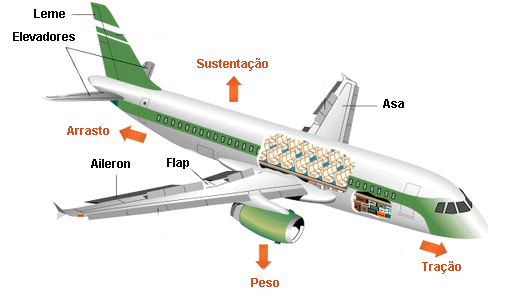1. Many people have broken the sound barrier while driving. Who was the first person to break it in a level flight?
a) Chuck Yeager
b) Scott Crossfield
c) Wilbur Wright
d) Neil Armstrong
2. What do you hear when somebody says something while you are travelling faster than the speed of sound?
a) Nothing at all
b) A sonic boom
c) Since you are travelling faster than the speed of sound you hear words back words
d) You hear what is being said because the air inside the aircraft is travelling at the same speed as you.
3. What Does ICAO stand for?
a) International Civil Aviation Organization
b) Intense Civil Aviation Operations
c) Interstate Civil Aviation Organization
d) Interstate Civil Aviation Operations
4. Which of the following are PPL training aircraft?
a) C172. B737
b) DA-20, B757
c) B767, A330
d) C172, DA-20, C152
5. What is the unit of measure of altitude in aviation?
a) Feet
b) Yards
c) Meters
d) Kilometers
6. What is the minimum age for getting a PPL license?
a) 15
b) 14
c) 16
d) 17
7. ASOS is something that a pilot needs to call for latest information. What does ASOS stand for?
a) airplane security oversight service
b) automated surface observation system
c) aviation-special operations satellite
d) all sorts of stuff
8. FBO or fixed based operator is a business that most airports have to handle what part of airport activity?
a) Flight instruction
b) Charter and aircraft rentals
c) Hangar operations, maintenance and fueling
d) All of above
9. The horizontal stabilizer in a plane helps the plane to:
a) Land smoothly
b) Fly straight
c) Slow down
d) Take off smoothly
10.What is an SST
a) Supersonic transport
b) Super saver traffic
c) Snow and sleet tractor
d) Saturday Sunday Traffic
11. Where are ailerons and flaps located in an airplane?
a) Power plant
b) Wings
c) Landing gear
d) Cockpit
12. What are the 4 forces of flight?
a) Air, weight, wings and motor
b) Lift, drag, weight and thrust
c) Electricity, fuel, momentum and weight
d) Motor, fuel, drag and wings
13.A foot pedal in the cockpit is used by the pilot to control what?
a) Ailerons which cause the aircraft to start
b) Rudder, which helps the plane to turn left and right
c) Brakes, which slow the aircraft in the air
d) Slow down on landing
14. Which force of flight does drag resist?
a) Lift
b) Thrust
c) Weight
d) All of above
15. When air molecules speed up, what happens to the pressure they exert?
a) It increase
b) It decreases
c) Spins counter clockwise
d) None of the above
16. The yoke is located in the cockpit. What does it control?
a) The flaps
b) The ailerons
c) Landing gear
d) The speed
17. What is the shape of the wings called?
a) Oval
b) Ellipse
c) Airfoil
d) Polygon
18. Thrust propels an aircraft in which direction?
a) Forward
b) Up
c) Down
d) Sideways
19. In aviation what does FAA stand for?
a) Financial Aid for Airports
b) Fire Attack Apparatus
c) Federal Aviation Agency
d) Federal Aviation Administration
20. What does ATC stand for?
a) air traffic control
b) airport terminal capacity
c) automatic taxiway clearance
d) air traffic count
21. What does IATA stand for in aviation industry?
a) International Air Transport Association
b) International Air Travelers’ Alliance
c) International Aviation Technology Association
d)Intercontinental Air Transportation Association
22. Which letters are used to distinguish parallel runways?
a) A, B, C
b) X, Y, Z
c) N, S, E, W
d) L, C, R
23. Which design feature is no longer found in new models of 747?
a) Restaurant
b) Small swimming pool
c) Parachutes
d) Spiral staircase
24. When does the term ‘heavy’, as in “Delta five eight heavy, cleared for landing runway 9 left” apply?
a) More than 250,000 pounds gross weight
b) More than 1,000,000 pounds gross weight
c) Full of passengers
d) Full of fuel
25. Which two-engine Boeing aircraft was the first to be certified for transatlantic/transpacific flights with the usual two-year-in service wait?
a) 717
b) 737
c) 757
d) 777
26.What is the normal number of cockpit crew assigned to a transoceanic 747 flight?
a) Two
b) Four
c) Six
d) Eight
27. What was the original model of Boeing 707 named as?
a) Noisy Nellie
b) Water Wagon
c) Smoky Joe
d) Seven Outta Sight
28. As of 2010, which call-sign belongs to British Airways?
a) British Airways
b) Speedbird
c) Union Jack
d) Big Ben
29. Air Sickness Bag is also known by a technical term. What is it?
a) Motion Discomfort Bag
b) Emesis Bag
c) Motion Sickness Bag
d) Air Sickness Bag
30. Air sickness bag is a very versatile product. What is the specific use for it?
a) Shopping bag
b) Pack gifts to send to your friends
c) Get the autograph of the famous person sitting next to you
d) Use in case of air sickness on flight
Answers
1. a
2. d
3. a
4. d
5. a
6. d
7. b
8. d
9. b
10. a
11. b
12. b
13. b
14. b
15. b
16. b
17. c
18. a
19. d
20. a
21. a
22. d
23. d
24. a
25. d
26. b
27. b



























